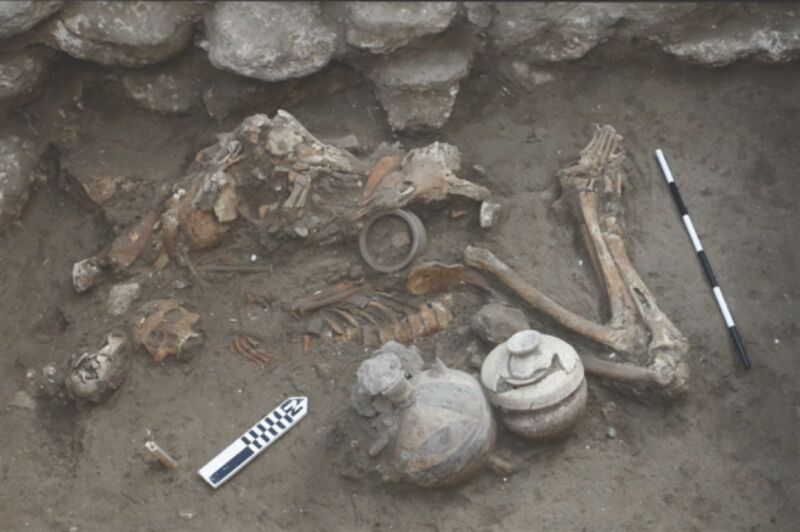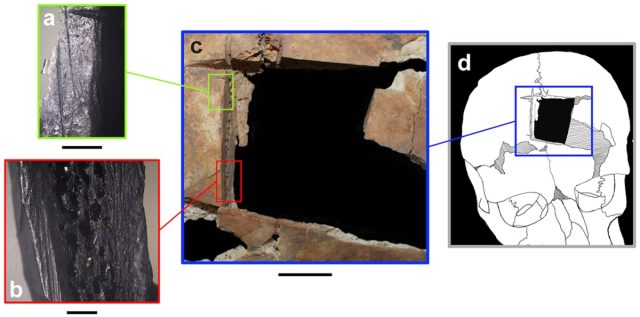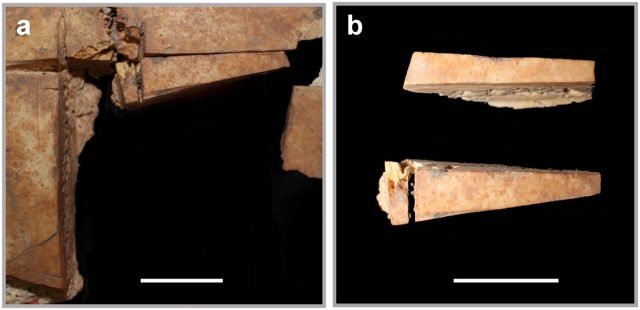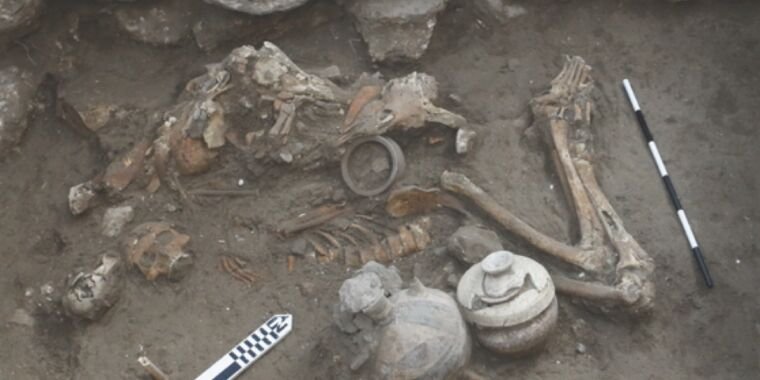Study: Bronze Age remains in Israel show signs of trepanation
[ad_1]

Just a couple of weeks ago, we reported that scientists had analyzed the skull of a medieval woman who once lived in central Italy and found evidence that she experienced at least two brain surgeries consistent with the practice of trepanation. Now a recent paper published last week in the journal PLoS ONE has reported evidence of trepanation in the remains of a man buried between 1550 and 1450 BCE at the Tel Megiddo archaeological site in Israel.
Cranial trepanation—the drilling of a hole in the head—is perhaps the oldest known example of skull surgery and one that is still practiced today, albeit rarely. It typically involves drilling or scraping a hole into the skull to expose the dura mater, the outermost of three layers of connective tissue, called meninges, that surround and protect the brain and spinal cord. Accidentally piercing that layer could result in infection or damage to the underlying blood vessels. The practice dates back 7,000 to 10,000 years, as evidenced by cave paintings and human remains. During the Middle Ages, trepanation was performed to treat such ailments as seizures and skull fractures.
In the case of the medieval woman’s skull, an oval area in the center of the cross-shaped defect was evidence of a well-healed trepanation procedure. Metal surgical tools were probably used to make a cross-shaped incision to the top of a head, scraping away the scalp from the bone—a trepanation method that is historically well-documented—which could also explain the signs of inflammation and/or infection. The second surgery likely occurred shortly before the woman’s death. It’s one of the few archaeological pieces of evidence of trepanation being performed on early medieval women yet found, although why the woman in question was subjected to such a risky invasive surgical procedure remains speculative.
This latest report of trepanation concerns one of two brothers (based on DNA testing of the remains) buried together at Tel Megiddo, which is located in the Jezreel Valley. The settlement once controlled part of a major land route connecting Egypt with Syria, Mesopotamia, and Anatolia called the Via Maris, making Tel Megiddo a prosperous urban center during the Middle and Late Bronze Ages. The remains of the two brothers were found in a tomb near the city’s Bronze Age palace, along with many fine wares, suggesting that the site was part of the palace complex, perhaps a residence for high-ranking officials.

One skeleton was largely intact (Individual 1), while the other’s (Individual 2) bones were disarticulated and partially covered by goat or antelope remains. The authors believe that Individual 2 was buried between one and three years before his brother in a different location, then exhumed and reburied along with his brother in a new pit—hence the disarticulation.
Most notably, Individual 1 had a small hole—about 32×31 mm at its widest point, formed by a series of intersecting notches—in his skull’s frontal bone where a piece of the skull had been removed. The authors report that the instrument used probably had to have a sharp beveled edge, given the clean margins. They also noted smaller scratches “consistent with the opening of the scalp, a necessary step prior to bone excision.” There was no sign of the bone healing, suggesting that the brother died either during or within a week after the trepanation.
Archaeologists also recovered two excised pieces of cranial bone with cuts on at least two sides, indicative that the procedure was performed piecemeal. Per the authors, all the evidence is consistent with a process known as angular-notched trepanation, in which a flap of skin is removed, followed by making one or two initial grooves, stopping before piercing the soft tissues underneath (the dura mater). Once all the grooved pieces had been cut, the practitioner would then remove them all at once. The authors suggest these pieces may have been placed back in the hole after the procedure to encourage healing. But lacking “proper hygienic storage conditions,” fatal complications likely ensued.

The authors offered speculative thoughts on why a trepanation might have been performed. The bones of both brothers showed evidence of developmental anomalies that were more severe in Individual 1, who had a fourth molar and two frontal bones that had not fully fused (metopic suture). Both are consistent with a rare skeletal disease called Cleidocranial dysplasia. (Actor Gaten Matarazzo, who plays Dustin on Stranger Things, has this condition.)
There were also indications of extensive lesions on the bones of both brothers, signs of a likely chronic debilitating disease. Leprosy is one possible candidate since it is known to spread throughout family units, and males between 10 and 19 years of age are most susceptible. However, “It is notoriously difficult to identify leprosy in archaeological, fragmented skeletal remains,” the authors wrote; hence, “we cannot identify a single underlying illness without further biomolecular testing.”
The authors also surmise the brothers were high-ranking and wealthy since they had survived so long with such a condition and had been buried with so many fine things near the palace. Also, an intervention like trepanation would have been quite rare and reserved for those with access to highly trained medical practitioners. Per the authors, only four other cases of this type of angular notched trepanation have been found in the region, and none showed any signs of post-operative healing, indicating those individuals also died shortly after the procedure.
DOI: PLoS ONE, 2023. 10.1371/journal.pone.0281020 (About DOIs).
[ad_2]
Source link




